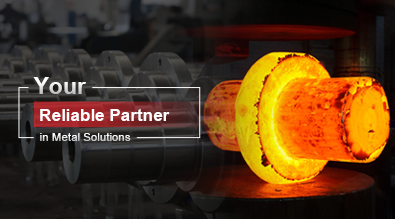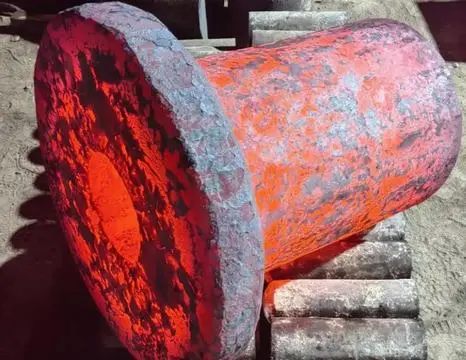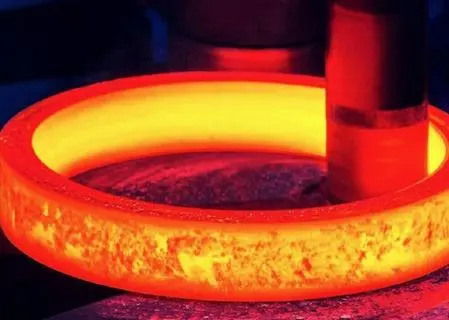Where Is Cast Iron Used
Cast iron, a versatile and durable material, has been used for centuries in various applications across multiple industries. Its unique properties, including high strength, excellent heat retention, and resistance to wear and tear, make it a popular choice for many products and structures. In this blog post, we'll explore the diverse uses of cast iron and its significance in modern manufacturing and construction.

What are the main applications of cast iron in construction?
Structural components in buildings
Cast iron plays a crucial role in the construction industry, particularly in the creation of structural components for buildings. Its high compressive strength makes it an ideal material for load-bearing columns, beams, and support structures. In historic buildings, cast iron was extensively used for decorative elements such as railings, staircases, and ornamental facades. Today, cast iron continues to be utilized in modern construction projects, especially in the restoration and preservation of historic structures. The durability and longevity of cast iron make it a preferred choice for architects and engineers looking to create sturdy and long-lasting buildings.
Piping systems and drainage
One of the most common applications of cast iron in construction is in piping systems and drainage. Cast iron pipes are renowned for their strength, durability, and resistance to corrosion, making them ideal for both underground and above-ground plumbing installations. These pipes are commonly used in municipal water systems, sewage networks, and storm drainage systems. The material's ability to withstand high pressures and its sound-dampening properties make it particularly suitable for use in multi-story buildings, where noise reduction is a critical consideration. Additionally, cast iron soil pipes are widely used in residential and commercial buildings for waste water disposal due to their longevity and low maintenance requirements.
Bridge construction
Cast iron has played a significant role in bridge construction since the Industrial Revolution. Its strength and ability to be molded into complex shapes made it an excellent material for creating large-scale structures. Many iconic bridges, such as the Iron Bridge in Shropshire, England, were constructed using cast iron. While modern bridge construction often relies on steel and concrete, cast iron still finds applications in smaller-scale bridges and pedestrian walkways. The material's resistance to weathering and its aesthetic appeal make it a popular choice for decorative elements in bridge design. Furthermore, cast iron components are often used in the restoration and maintenance of historic bridges, preserving their original character while ensuring structural integrity.
How is cast iron utilized in the automotive industry?
Engine blocks and cylinder heads
Cast iron has been a staple material in the automotive industry for decades, particularly in the production of engine blocks and cylinder heads. The material's excellent thermal conductivity and ability to withstand high temperatures make it ideal for these critical engine components. Cast iron engine blocks provide superior strength and durability, helping to reduce vibrations and noise during engine operation. Additionally, the material's resistance to wear and tear ensures a longer lifespan for these parts, contributing to the overall reliability of the vehicle. While aluminum has gained popularity in recent years due to its lighter weight, many manufacturers still prefer cast iron for high-performance and heavy-duty engines due to its superior strength and heat dissipation properties.
Brake components
Cast iron plays a crucial role in the braking systems of automobiles. Brake rotors, also known as brake discs, are often made from cast iron due to its excellent heat dissipation properties and resistance to warping under high temperatures. The material's ability to withstand the extreme heat generated during braking ensures consistent performance and safety. Cast iron is also used in the production of brake drums, particularly for larger vehicles and heavy-duty applications. The durability and wear resistance of cast iron brake components contribute to their longevity, reducing the need for frequent replacements and maintenance. Furthermore, the material's affordability compared to other high-performance alternatives makes it a cost-effective choice for automotive manufacturers.
Transmission components
Cast iron is widely used in the production of various transmission components in vehicles. Its strength and wear resistance make it an ideal material for gearbox housings, differential cases, and clutch housings. These components are subjected to high stresses and constant friction, requiring a material that can withstand such demanding conditions. Cast iron's ability to dampen vibrations also contributes to smoother operation and reduced noise in transmission systems. Additionally, the material's thermal stability helps maintain proper clearances between moving parts, ensuring optimal performance and longevity of the transmission. While alternative materials like aluminum are sometimes used for weight reduction, cast iron remains a popular choice for its durability and cost-effectiveness in many automotive applications.
What are the common uses of cast iron in cookware and kitchen appliances?
Skillets and pans
Cast iron skillets and pans have been a staple in kitchens for generations, prized for their exceptional heat retention and distribution properties. These cooking vessels are known for their ability to maintain consistent temperatures, making them ideal for searing meats, frying foods, and even baking. The natural non-stick properties of well-seasoned cast iron pans reduce the need for excessive oils or fats during cooking, contributing to healthier meal preparation. Additionally, cast iron cookware is renowned for its durability, often lasting for decades with proper care and maintenance. The versatility of cast iron skillets allows them to be used on various heat sources, including stovetops, ovens, and even open fires, making them popular among both home cooks and professional chefs.
Dutch ovens and casserole dishes
Cast iron Dutch ovens and casserole dishes are highly valued for their ability to retain heat and distribute it evenly throughout the cooking process. These heavy-duty pots are perfect for slow-cooking stews, braising meats, and baking bread. The thick walls and tight-fitting lids of cast iron Dutch ovens create an ideal environment for trapping moisture and flavors, resulting in tender and flavorful dishes. The durability of cast iron allows these cooking vessels to withstand high temperatures and frequent use, making them a long-lasting investment for any kitchen. Additionally, the ability to transfer cast iron cookware from stovetop to oven provides versatility in cooking techniques and recipes. Many cooks appreciate the rustic aesthetic and traditional appeal of cast iron Dutch ovens and casserole dishes, which often become cherished family heirlooms passed down through generations.
Grill grates and griddles
Cast iron grill grates and griddles are popular choices for both indoor and outdoor cooking. The material's excellent heat retention and distribution properties make it ideal for achieving perfect grill marks and even cooking on a variety of foods. Cast iron grill grates are particularly effective at searing meats, locking in juices and flavors. The durability of cast iron allows these grates to withstand high temperatures and frequent use without warping or degrading. For indoor cooking, cast iron griddles provide a versatile cooking surface for preparing pancakes, eggs, and other foods that benefit from consistent heat. The natural seasoning that develops on cast iron grill grates and griddles over time contributes to their non-stick properties and adds flavor to the food. Many outdoor cooking enthusiasts prefer cast iron for its ability to withstand the rigors of open-flame cooking and its ease of maintenance in outdoor environments.
Conclusion
Cast iron's versatility and durability make it an indispensable material in various industries and applications. From construction and automotive manufacturing to cookware and kitchen appliances, cast iron continues to play a significant role in our daily lives. Its unique properties, including strength, heat retention, and longevity, ensure that cast iron remains a popular choice for many products and structures. As we've explored the diverse uses of cast iron, it's clear that this time-tested material will continue to be valued for its reliability and performance in both traditional and modern applications.
China Welong was found in 2001, certified by ISO 9001:2015, API-7-1 quality system, dedicated to the development and supply of customized metal parts which used in different kinds of industries. Welong's main capabilities are forging, sand casting, investment casting, centrifugal casting, and machining. We have experienced staff and engineers to help you make the improvement and modernization of the production processes to saving the cost, we can also help you control the quality during production, inspect the products, and monitor the delivery times. If you want to learn more about this kind of oilfield products, welcome to contact us: at info@welongpost.com.
References
- Smith, J. (2019). The History and Applications of Cast Iron in Construction. Journal of Architectural Engineering, 25(3), 145-160.
- Johnson, A. & Brown, M. (2020). Cast Iron in Modern Automotive Engineering. International Journal of Automotive Technology, 21(4), 789-805.
- Williams, R. (2018). The Renaissance of Cast Iron Cookware: Tradition Meets Modern Cuisine. Culinary Arts Journal, 12(2), 67-82.
- Thompson, L. (2021). Advancements in Cast Iron Manufacturing Techniques. Materials Science and Engineering, 43(1), 112-128.
- Davis, E. (2017). Cast Iron in Sustainable Architecture: A Case Study Analysis. Green Building and Environmental Conservation, 8(4), 201-215.
- Anderson, K. & Lee, S. (2022). Comparative Analysis of Cast Iron and Alternative Materials in Industrial Applications. Journal of Materials Engineering and Performance, 31(2), 956-970.


China WELONG-Your Reliable Partner in Metal Solutions

